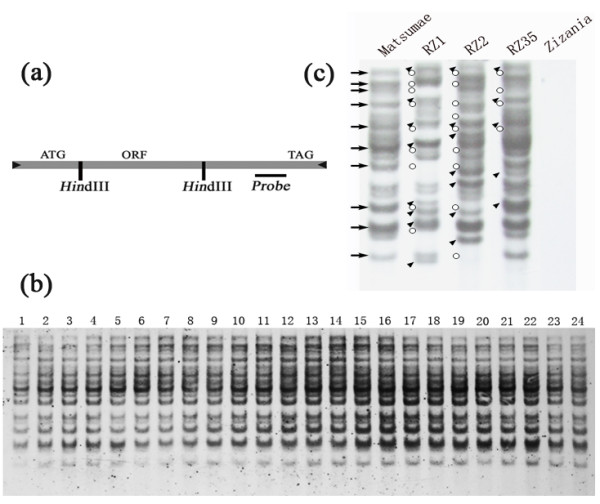Figure 1.

Southern blot hybridization illustrating possible mobilization of the Dart-related TEs in three rice-Zizania introgressants and their immobility in the rice parental line. (a) Diagram of a full-length copy of the Dart-related TEs showing the restriction site of the enzyme (HindIII) used, and the probe-targeting region (based on Fujino et al. 2005. Mol Genet Genomics 273: 150-157). (b) Hybridization of the Dart probe to HindIII-digested genomic DNAs of 24 randomly chosen individual plants of the parental rice line Matsumae; the monomorphic pattern across the plants pointed to stability of Dart-related TEs in this rice cultivar. (c) Hybridization of the same probe to HindIII-digested genomic DNAs of three introgressants (RZ1, RZ2 and RZ35), their rice parental line (Matsumae) and the wild donor species, Zizania latifolia. The rice parental bands disappeared from one or more of the three introgressants (marked by circles) were indicated by arrows. Novel bands appeared de novo in the introgressants were denoted by arrowheads. No hybridization signal was detectable in Z. latifolia, indicating lack of a homologue of the Dart-related TEs in this wild species, and hence, none of the novel bands in the introgressants were due to direct introgression.
